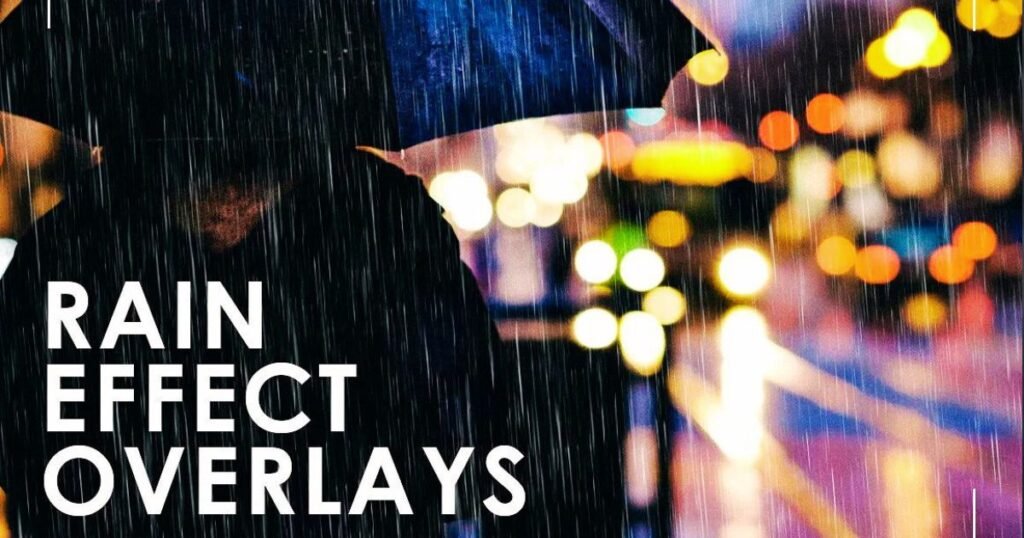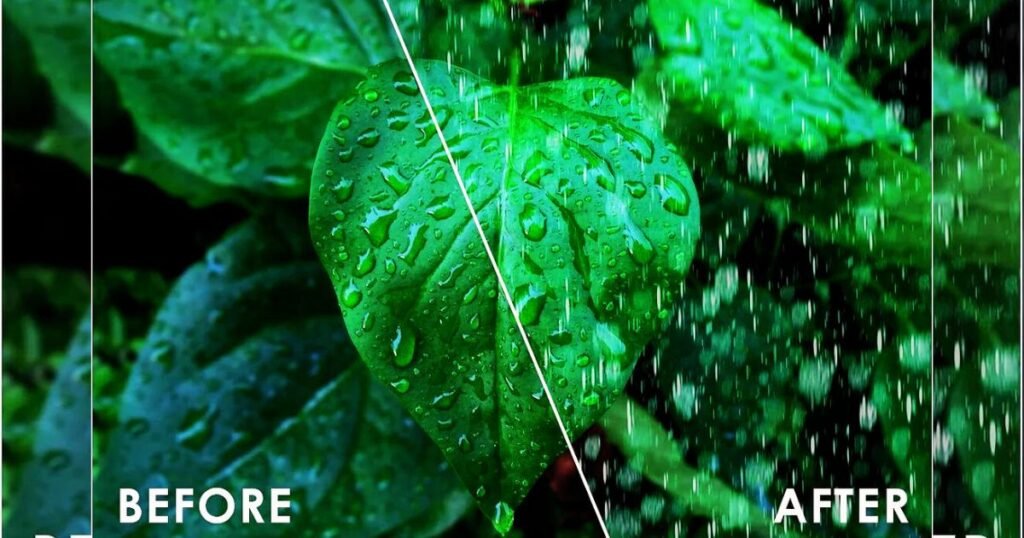Introduction
In the world of photography and digital art, the ability to capture or create the perfect atmosphere is paramount. Among the most challenging yet captivating natural phenomena to reproduce is rain. This article delves deep into the realm of realistic rain photo overlays, backgrounds, and textures, focusing on the intricate relationship between rain and photography. We’ll explore how these elements can transform ordinary images into extraordinary visual stories, enhance mood, and elevate the overall impact of photographic and design projects.
The Allure of Rain in Photography
Rain has long been a source of fascination for photographers and artists alike. Its ability to dramatically alter landscapes, create reflections, and evoke emotions makes it a powerful tool in visual storytelling. However, capturing rain in photography can be challenging due to various factors such as lighting conditions, camera protection, and the unpredictable nature of weather.
Read More: White Marble Gold Textures

Characteristics of Rain in Images
- Droplets: Varying sizes and shapes of water droplets
- Streaks: Elongated lines created by falling rain
- Splashes: Impact patterns on surfaces
- Mist: Fine spray creating a hazy effect
- Reflections: Mirrored surfaces on wet grounds
The Rise of Rain Photo Overlays
With the advancement of digital editing techniques, rain photo overlays have become increasingly popular. These digital assets allow photographers and designers to add Realistic Rain Photo Overlays effects to images post-production, offering greater control and creativity.
Benefits of Using Rain Photo Overlays
- Consistency: Achieve a uniform rain effect across multiple images
- Control: Adjust intensity, direction, and style of rain
- Convenience: No need to wait for actual rainy conditions
- Safety: Protect equipment from water damage
- Versatility: Apply to any image, regardless of original weather conditions
Types of Rain Photo Overlays
Droplet Overlays
- Ideal for close-up shots
- Creates a sense of immediacy and detail
Rain Streak Overlays
- Simulates falling rain
- Adds dynamism to images
Splash Overlays
- Perfect for puddles and wet surfaces
- Enhances the impact of rain in scenes
Mist and Fog Overlays
- Creates atmospheric depth
- Softens backgrounds and adds mystery
Composite Overlays
- Combines multiple rain effects
- Offers a comprehensive rain simulation
Creating Realistic Rain Photo Overlays Backgrounds
Rain backgrounds serve as the foundation for many rain-themed compositions. They can set the mood and provide a canvas for other elements.
Techniques for Creating Rain Backgrounds
Photography-Based
- Capturing real rain scenes
- Using long exposures for streaking effects
Digital Painting
- Creating rain textures from scratch
- Offering complete control over every element
3D Rendering
- Generating hyper-Realistic Rain Photo Overlays simulations
- Allowing for complex lighting and physics
Composite Techniques
- Combining multiple layers of rain effects
- Blending photographic and digital elements
Key Elements of Convincing Rain Backgrounds
- Depth: Creating a sense of distance with varying opacity and size
- Lighting: Incorporating appropriate highlights and shadows
- Atmosphere: Adding haze or mist for realism
- Surface Interaction: Showing how rain affects different materials
Rain Textures: Adding Depth and Realism
Rain textures are essential for creating believable wet surfaces and adding tactile quality to images. They can be used on their own or in combination with overlays and backgrounds.
Types of Rain Textures
Wet Asphalt
- Reflective surfaces for urban scenes
- Adds grit and realism to cityscapes
Raindrop-Covered Glass
- Perfect for window scenes
- Creates an intimate, indoor perspective of rain
Rippled Water
- Simulates rain on bodies of water
- Adds movement and life to lake or ocean scenes
Wet Foliage
- Enhances nature photography
- Brings out vibrant colors in plants
Pooling Water
- Creates realistic puddles and accumulation
- Adds depth to ground surfaces
Applying Rain Effects to Different Photographic Genres
Landscape Photography
- Enhancing mood and atmosphere
- Creating dramatic skies and reflections
Portrait Photography
- Adding emotion and storytelling elements
- Creating unique environmental portraits
Street Photography
- Capturing the energy of urban life in rain
- Enhancing reflections on city surfaces
Nature and Wildlife
- Showcasing animals and plants in rainy conditions
- Adding drama to natural scenes
Architecture
- Highlighting building materials and textures
- Creating moody cityscapes
Technical Considerations for Rain Photography
While rain overlays and textures offer great flexibility, understanding real rain photography techniques is crucial for creating authentic-looking results.
Camera Settings for Rain Photography
- Shutter Speed: Fast for freezing droplets, slow for streaking effects
- Aperture: Wide for low-light conditions, narrow for greater depth of field
- ISO: Higher settings for darker conditions, balanced with noise considerations
- White Balance: Adjusting for cooler tones typically associated with rain
Lighting Techniques for Rain
- Backlighting: Highlighting individual raindrops
- Side Lighting: Creating dramatic shadows and textures
- Artificial Lighting: Using flashes or continuous lights for controlled effects
- Natural Light: Working with overcast conditions for soft, even illumination

Post-Processing Rain Photos
Even when using overlays and textures, post-processing plays a crucial role in creating convincing rain effects.
Key Post-Processing Techniques
- Color Grading: Adjusting overall tone to match rainy conditions
- Contrast Adjustment: Enhancing the separation between rain and background
- Dodging and Burning: Emphasizing highlights and shadows in rain
- Sharpening: Bringing out details in water droplets and textures
- Blending Modes: Integrating overlays seamlessly with base images
Popular Software for Rain Effects
- Adobe Photoshop: Industry standard for detailed editing and compositing
- Adobe Lightroom: Excellent for overall image adjustments and batch processing
- Affinity Photo: Powerful alternative with similar capabilities to Photoshop
- GIMP: Free, open-source option for budget-conscious creators
- Luminar AI: AI-powered editor with automated sky and weather effects
Creating Custom Rain Overlays and Textures
For those looking to develop unique Realistic Rain Photo Overlays effects, creating custom overlays and textures can be a rewarding process.
Methods for Custom Creation
- Photography: Capturing real rain in controlled settings
- Digital Painting: Using brush techniques to create Realistic Rain Photo Overlays elements
- 3D Rendering: Generating Realistic Rain Photo Overlays simulations with particle systems
- Practical Effects: Using water sprays and mists for authentic textures
Tips for Custom Rain Effect Creation
- Vary Droplet Sizes: Create a range of droplet sizes for natural-looking rain
- Consider Depth: Make closer rain elements larger and more in focus
- Add Motion Blur: Simulate movement with directional blurring
- Include Environmental Interactions: Show how rain affects different surfaces
- Pay Attention to Lighting: Ensure consistent lighting across all elements
Ethical Considerations in Rain Photography
As with any form of image manipulation, there are ethical considerations to keep in mind when using Realistic Rain Photo Overlays overlays and textures.
Ethical Guidelines
- Transparency: Be open about the use of overlays in commercial or journalistic work
- Authenticity: Strive to create believable effects that enhance rather than deceive
- Respecting Original Work: Obtain proper licenses for overlays and textures
- Environmental Responsibility: Consider the message conveyed by artificially adding Realistic Rain Photo Overlays to scenes
The Future of Realistic Rain Photo Overlays Effects in Photography
As technology continues to advance, we can expect to see new developments in the creation and application of rain effects.
Emerging Trends and Technologies
- AI-Generated Rain: Machine learning algorithms creating hyper-Realistic Rain Photo Overlays
- Real-Time Rain Effects: Live application of Realistic Rain Photo Overlays in camera apps
- Virtual Reality Integration: Immersive Realistic Rain Photo Overlays experiences in VR photography
- Advanced Particle Simulations: More accurate physics-based Realistic Rain Photo Overlays renderings
- Smart Compositing: AI-assisted blending of Realistic Rain Photo Overlays effects with base images
Best Practices for Using Rain Photo Overlays and Textures
To achieve the most convincing and impactful results, consider the following best practices:
- Study Real Rain: Observe and analyze how rain behaves in various conditions
- Layer Multiple Effects: Combine different overlays for depth and realism
- Adjust Opacity: Blend rain effects subtly for a natural look
- Match Lighting: Ensure rain elements are consistent with the scene’s lighting
- Consider the Story: Use rain to enhance the narrative of your image
- Practice Restraint: Avoid overusing effects, which can lead to unrealistic results
- Experiment with Blending Modes: Try different modes to integrate rain seamlessly
- Pay Attention to Details: Add small touches like splashes and ripples for authenticity
- Maintain Consistency: Ensure rain effects are uniform across a series of images
- Seek Feedback: Get opinions from others to refine your technique
Applications Beyond Photography
Rain overlays, backgrounds, and textures have applications that extend beyond traditional photography.
Extended Applications
- Film and Video: Adding rain effects to motion pictures
- Video Games: Creating Realistic Rain Photo Overlays environments in gaming
- Augmented Reality: Integrating rain effects into AR experiences
- Digital Art: Using rain elements in illustrations and digital paintings
- Advertising: Enhancing product photography with atmospheric rain effects
The Psychology of Rain in Images
Understanding the emotional impact of rain can help creators use these effects more effectively.
Emotional Associations with Rain
- Melancholy: Often associated with sadness or introspection
- Renewal: Symbolizing cleansing and new beginnings
- Romance: Creating intimate and cozy atmospheres
- Drama: Adding tension and intensity to scenes
- Tranquility: Evoking a sense of calm and peace
Leveraging Emotions in Rain Photography
- Color Temperature: Using cooler tones for somber moods, warmer for coziness
- Intensity: Adjusting rain density to match the desired emotional impact
- Composition: Framing shots to emphasize isolation or togetherness in rain
- Lighting: Manipulating light to create dramatic or soft rain scenes
Practical Applications of Rain Effects in Various Industries
Fashion Photography
- Creating moody editorials
- Showcasing waterproof clothing and accessories
Real Estate Photography
- Demonstrating all-weather appeal of properties
- Highlighting architectural features in rain
Travel and Tourism
- Showcasing destinations in diverse weather conditions
- Creating atmospheric promotional materials
Product Photography
- Testing and displaying water-resistant products
- Adding drama to beverage and food photography
Fine Art
- Creating evocative, rain-themed artwork
- Exploring the interplay of light and water in compositions
Challenges in Creating Realistic Rain Photo Overlays Effects
While rain overlays and textures offer many advantages, there are challenges to creating truly realistic effects.
Common Challenges
- Matching Perspective: Ensuring rain aligns with the image’s perspective
- Consistent Lighting: Adapting rain effects to various lighting conditions
- Natural Randomness: Avoiding repetitive patterns in rain distribution
- Surface Interactions: Realistically showing how rain affects different materials
- Depth Perception: Creating a sense of rain falling through 3D space
Overcoming Challenges
- Practice and Observation: Studying real rain behavior in various conditions
- Customization: Modifying stock overlays to fit specific scenes
- Layering Techniques: Combining multiple effects for greater realism
- Advanced Editing: Using masks and blend modes for precise control
- Continuous Learning: Staying updated with new techniques and technologies
The Role of Sound in Rain Imagery
While this article focuses on visual aspects, it’s worth noting the powerful role that sound plays in creating immersive rain experiences, especially in video and multimedia projects.
Incorporating Sound with Rain Visuals
- Ambient Rain Sounds: Adding background Realistic Rain Photo Overlays noise to enhance atmosphere
- Specific Sound Effects: Including splashes, drips, and thunder for realism
- Music Selection: Choosing appropriate music to complement rain visuals
- Interactive Elements: Creating responsive sound design for interactive media
Conclusion
Realistic rain photo overlays, backgrounds, and textures have revolutionized the way photographers and digital artists approach weather-related imagery. These tools offer unprecedented control and creativity, allowing creators to enhance their work with atmospheric Realistic Rain Photo Overlays effects regardless of actual weather conditions. From subtle drizzles to dramatic downpours, the versatility of rain effects opens up a world of possibilities for visual storytelling.
At Graphics, we understand the power of these elements in transforming ordinary images into extraordinary visual experiences. Whether you’re a professional photographer, a digital artist, or an enthusiast looking to enhance your creative projects, mastering the use of rain effects can significantly elevate your work. By combining technical skill with artistic vision, you can create captivating Realistic Rain Photo Overlays scenes that resonate with viewers on an emotional level.
As technology continues to advance, we can expect even more realistic and easier-to-use rain effects in the future. However, the key to creating truly impactful rain imagery will always lie in the artist’s understanding of light, composition, and the emotive power of Realistic Rain Photo Overlays itself. By staying true to these fundamentals while embracing new tools and techniques, creators can continue to push the boundaries of what’s possible in rain photography and digital art.
Remember, the goal is not just to add rain to an image, but to use it as a tool to enhance the story, mood, and impact of your visual creations. With practice, observation, and a willingness to experiment, you can master the art of Realistic Rain Photo Overlays and take your photography and design work to new heights.

FAQs
What are the key elements that make rain look realistic in photos?
Realistic Rain Photo Overlays include properly sized and shaped droplets, consistent lighting and reflections, appropriate motion blur, and believable interactions with surfaces in the image.
How can I ensure my rain overlays blend seamlessly with the original photo?
Use blending modes in your editing software, adjust opacity levels, match the lighting and perspective of the overlay to the base image, and pay attention to how the rain interacts with different surfaces in the photo.
Are there any legal considerations when using rain overlays in commercial photography?
Yes, ensure you have the proper licenses for any overlays or textures you use, especially in commercial work. Always read and comply with the usage terms provided by the creators or stock image platforms.
Can rain effects be added to videos as well as still images?
Absolutely. Many video editing software packages offer rain effect plugins or allow you to add rain footage as an overlay. The principles are similar to those used in still images, but with the added complexity of motion.
How do I choose the right type of rain effect for my image?
Consider the mood you want to convey, the intensity of the rain you’re simulating, and the overall composition of your image. Experiment with different styles and intensities to find what works best for your specific photo.
Is it possible to create custom rain overlays, and how would I go about doing this?
Yes, you can create custom overlays by photographing real rain, using 3D rendering software, or painting digitally. Experiment with different techniques and tools to develop your unique style of Realistic Rain Photo Overlays effects.
How do Realistic Rain Photo Overlays effects impact the overall mood and emotion of a photograph?
Rain can dramatically alter the mood of an image, often adding a sense of melancholy, romance, drama, or renewal. The intensity and style of rain you choose can significantly influence the emotional impact of your photo.
What are some common mistakes to avoid when adding Realistic Rain Photo Overlays effects to photos?
Common pitfalls include unrealistic droplet sizes, inconsistent lighting between the Realistic Rain Photo Overlays and the base image, overuse of effects leading to an artificial look, and failing to show proper interaction between the rain and surfaces in the image.
How can I make rain effects look good in both color and black and white photography?
In color photography, pay attention to the blue tones often associated with rainy weather. For black and white, focus on contrast and the interplay of light and shadow to make the rain effects stand out.
Are there any ethical concerns about adding rain effects to journalistic or documentary photography?
Yes, there are ethical considerations. In journalistic and documentary photography, adding Realistic Rain Photo Overlays effects could be seen as manipulating reality. It’s crucial to be transparent about any significant alterations made to such images and to adhere to industry ethical standards.





